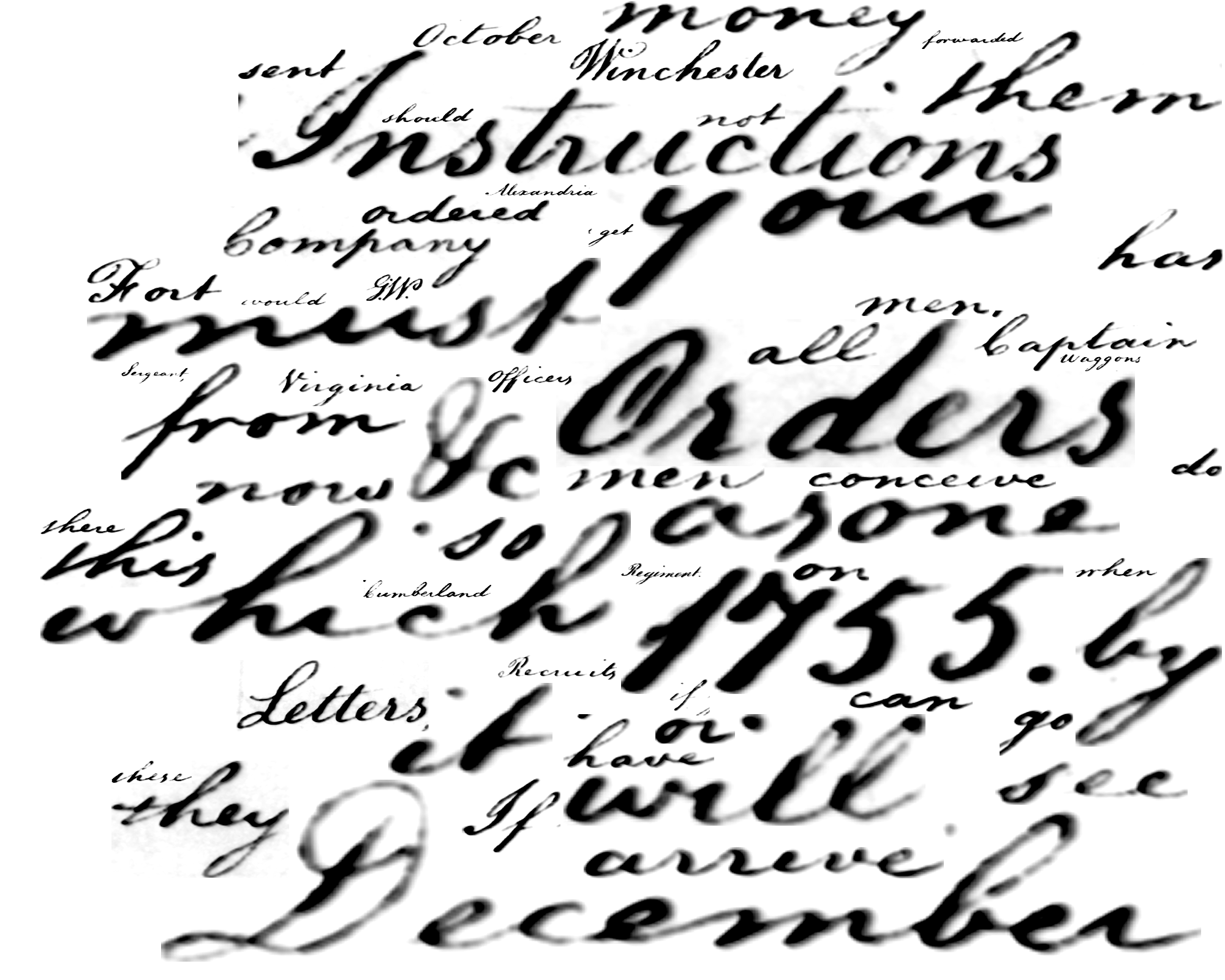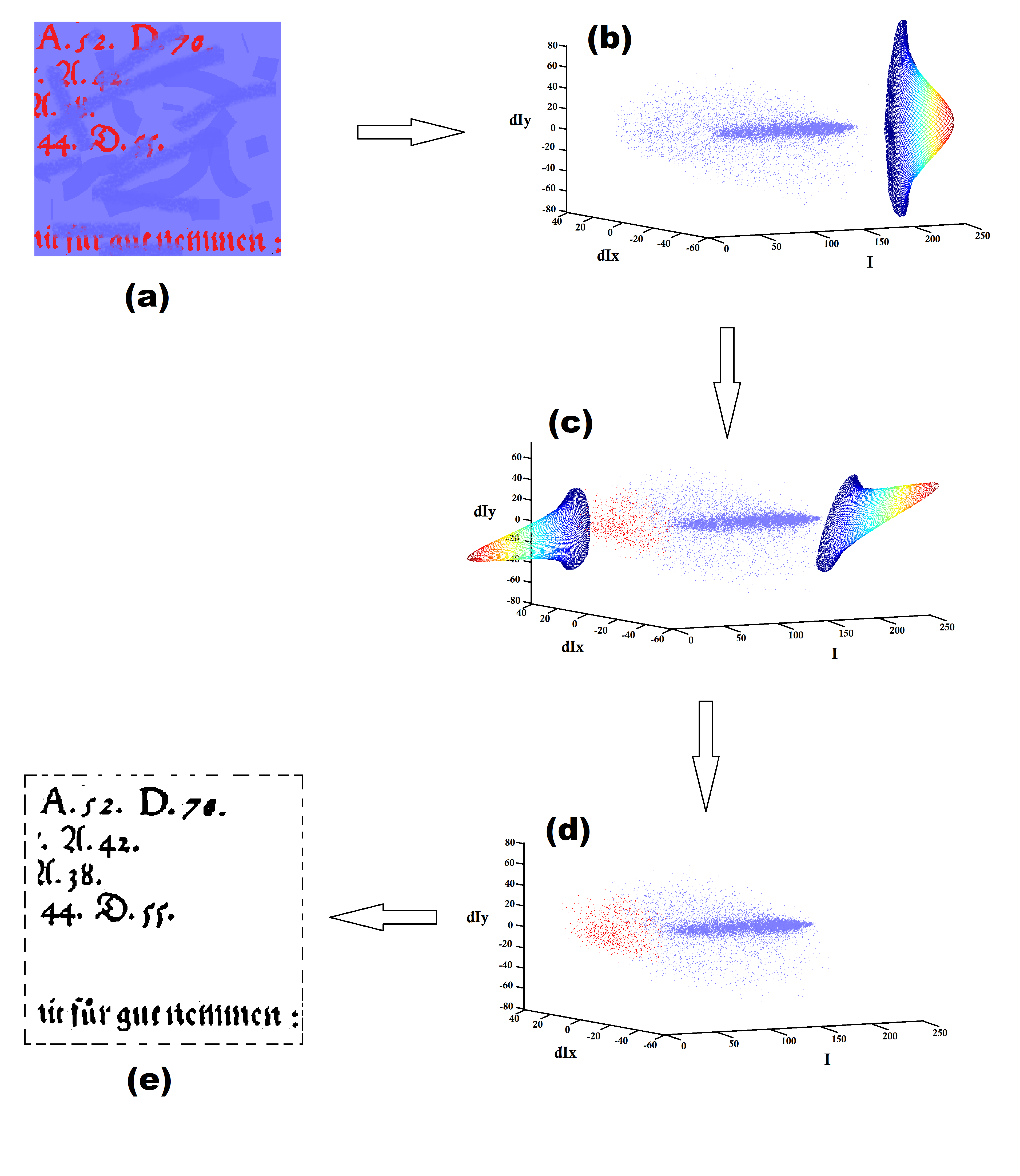
|
Writer Identification and Dating
Fredrik Wahlberg, Anders Brun
Partners: Lasse Mårtensson, Dept. of Business and Economics Studies, Högskolan i Gävle
Funding: UU; Swedish Research Council
Period: 1401-
Abstract: The problem of identifying the writer of some handwritten text is of great interest in both forensic and historical research. Sadly the magical CSI machine for identifying a scribal hand does not exist. Using image analysis, statistical models of how a scribe used the quill pen on a parchment can be collected. These measurements are treated as a statistical distribution over writing practices. We using this information to identify single writers and perform style based dating of historical manuscripts.
Optical Character Recognition of Handwritten Texts
Anders Brun, Ewert Bengtsson, Fredrik Wahlberg, Tomas Wilkinson, Kalyan Ram
Partners: Lasse Mårtensson, Dept. of Business and Economics Studies, Högskolan i Gävle; Mats Dahllöf, Dept. of Linguistics and Philology, UU; Alicia Fornés, Universitat Autònoma de Barcelona, Italy
Funding: Faculty of Languages and Humanities, UU; Swedish Research Council
Period: 1008-
Abstract: Optical character recognition (OCR) is still, after nearly 100 years of research, an active area of research. Currently, one of the frontiers is the recognition of handwritten text (HTR), in particular from historical documents. This year, we had a two month visit by guest researcher Alicia Fornés from Universitat Autònoma de Barcelona. We submitted several grant applications and continued a collaboration with the Swedish Museum of Natural History. Promising results during the year include a novel visualization technique, image based word clouds (Figure 20), large scale analysis of medieval letters, better techniques for document binarization and cluster analysis of letter shapes (Figure 21).

|

|
GeoMemories
Anders Hast
Partners: Andrea Marchetti, Salvatore Minutoli, Alessandro Prosperi, Alessandro Lugari, Maurizio Tesconi, Beatrice Rapisarda, Matteo Abrate, Clara Bacciu, Davide Gazzé, Sergio Bianchi, Istituto di Informatica e Telematica (IIT), Pisa, Italy
Abstract: The GeoMemories project is aimed at making publicly available, through web access, heritage preserved in the archives of Aerofototeca Nazionale in Rome, which contains photographs covering the Italian territory from the end of 1800 till modern days. The web application is based on google earth but oriented towards the management of the temporal variable, so that geospatial changes can be monitored over time. The historical aerial photos need to be digitized, illumination corrected, orthorectified, georeferenced and finally stitched together. Anders Hast spent one year (2011) at IIT, CNR in Pisa Italy as an ERCIM fellow working with image processing and computer vision aspects in the project. Since returning to UU he is a research associate at IIT, CNR and continues working with the project and focus has been on how to improve the algorithms needed and several papers have been published. Recently the challenges and advantages of stereo visualisation of the historical archive has been investigated.
Image Analysis for Landscape Analysis
Anders Brun
Partners: Bo Malmberg, Michael Nielsen, Dept. of Human Geography, Stockholm University; Anders Wästfelt, Dept. of Economics, SLU
Funding: UU/SU
Period: 0901-
Abstract: This project is a collaboration with researchers at SU and SLU. It aims to derive information about the landscape (rural and city) from satellite images. The project focuses on using texture analysis of images, rather than only pixelwise spectral analysis, to segment the image into different meaningful regions. One journal manuscript was published during 2014 and the collaboration with the GLEAN project at the Dept. of Political Science at Stockholm University has continued.
Recognition and Image Analysis for Natural History Collections
Anders Brun, Tomas Wilkinson
Partners: Stefan Daume, Swedish Museum of Natural History; Alicia Fornés, Universitat Autònoma de Barcelona, Italy
Funding: UU/SU
Period: 1401-
Abstract: In this project we investigate ways to automatically interpret text labels, which are often handwritten, in large natural history collections. Examples of such collections include for instance herbarium sheets and collections of insects. It is estimated that we have around 33 million collected specimen in Sweden alone. Some of these have been digitized, in particular herbarium sheets, but the process is very labor intense. Addring automatic recognition of text, would speed up this process considerably and make the digitized data more useful for further data mining. During 2015, we were co-applicants for one large infrastructure grant proposal and Anders Brun gave an invited speech at the Swedish Natural History Museum Digitization Symposium.
Tracking Honey Bees and their Interactions
Cris Luengo
Partners: Olle Terenius, Ingemar Fries, Joachim Rodrigues de Miranda, Eva Forsgren, Barbara Locke, Dept. of Ecology, SLU; Fredrik Liljeros, Dept. of Sociology, Stockholm University
Funding: Åke Wiberg Foundation; S-faculty, SLU
Period: 1003-
Abstract: In this project, we are creating a system in which we can observe a portion of a bee hive (containing about one thousand individuals, each tagged with a unique identifier on its back) over days or weeks. Bees will be free to enter and exit the hive, and the environment will be set up to be as natural as possible for the bees. The purpose is to observe the natural behaviour of the bees, and record the type and duration of interaction between individuals. During 2014, we applied for funding to continue this work.